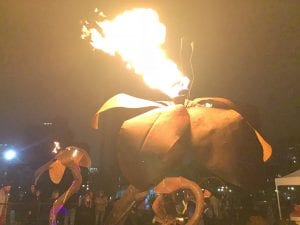A sneak peak of our Metaphor Machine!!
In our Metaphor Machines unit in Humanities, we’ve been learning about the Industrial Revolution and steam era. Stemming from these topics, we’ve also been designing and reading about steampunk. Steampunk is a genre that takes the 19th century steam era and morphs it into the facilitator of a technological revolution that combines the steam-powered innovations with modern technologies and aesthetics. My inquiry question for this post is: How do people preserve the ideologies of steampunk today? What do they do to keep it alive?

darksouls1 / Pixabay
People celebrate steampunk with festivals, events, books, costumes, and machines designed to fit the steampunk artistry. The idea of steampunk is worldwide, and many dedicate much of their time to these activities. This is how steampunk is kept alive and relived many times over. There are festivals all over the world to be attended. For example, on this website you can find steampunk conventions in the U.S. quickly and easily. These outlets have also been established to make sure that steampunk is discoverable to anyone.
A steampunk festival we watched a video about in class is the Coldwater Steampunk Festival in Coldwater, Ontario. This festival has won awards for its showings, and is free to attend. This means anyone can come and experience steampunk, no matter if you can afford to dress up magnificently or just come as you are. There are many contests you can enter to show off your steampunk designing abilities through costumes and art, etc. I have never attended a steampunk festival, but I believe it would be great fun and also educational to learn about the historical aspect of steampunk or appreciate the arts and creations that people make. Festivals are probably one of the most prominent attributes to keeping steampunk alive; without them, so many people wouldn’t be able to get together and compile their love and stories and appreciation for steampunk. They allow for the spread of ideas and inspiration too. If someone discovers steampunk, and then attends a festival, they’re immediately immersed into the steampunk culture and they have the chance to get to know the genre.

FelixMittermeier / Pixabay
Another way steampunk is celebrated is through literature. Books that incorporate steampunk into their stories, or write stories about steampunk, are common and an amazing way to learn about the fantasy side of steampunk. We are currently reading a novel called Leviathan by Scott Westerfeld in Humanities. Leviathan follows the stories of Alek, a young prince, and Deryn, an ambitious girl, and their adventures within a steampunk society set at the time of World War 1. Not quite a dystopia, but close, the book takes history and alters it, adding the Clankers and the Darwinists as the two warring sides. The Clankers, as it sounds, use large machines and depend on steampunk-like apparatuses for combat, whereas the Darwinists use a more fantasy-type approach with fabricated monsters as their weapons and ships. Not as steampunk as the Clankers, but I still consider it to represent the steampunk genre in some form, as the act of taking all these separate parts and gears from different animals and combining them into one giant beast sounds similar to steampunk creations. Overall, Leviathan incorporates many steampunk components. Other popular books that belong to the steampunk genre are Frankenstein by Mary Shelley and The Golden Compass by Philip Pullman— I had no idea that these were considered steampunk! Even books that you may have previously read or known of could be drawing from the idea of steampunk.
My drawing of Deryn from Leviathan!! I added the gears around her to represent the steampunk in the book.
In our Metaphor Machines unit, learning about steampunk has been relevant because of the novel Leviathan. We’ve had to make our Metaphor Machines (you will have the chance to learn more about them soon) steampunk-ified because of our research on the subject and exploration of Leviathan’s tale. To take it further, my inquiry question delved into steampunk traditions used in the real world. In conclusion, steampunk is carried out by the passionate people who organize these festivals, and the authors who shape the steampunk stories and literature in general.









Leave a Reply